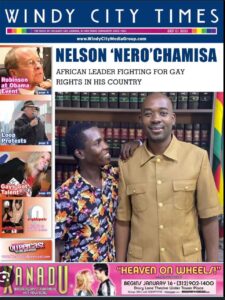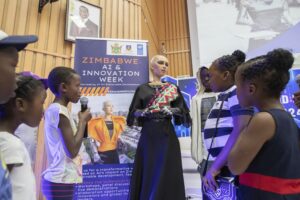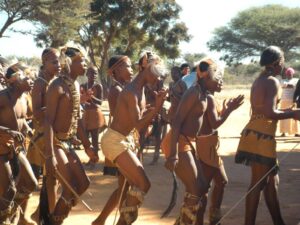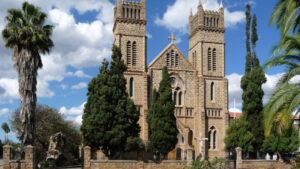CLAIM: Picture is of ‘Nkosilathi Ndlovu a victim of Zimbabwe’s Gukurahundi’.
SOURCE: @auzqn on X (formerly Twitter)
VERDICT: False
Recontextualised images have become quite common on social media platforms.
Recontextualized media is any image, video, or audio clip that has been taken out of its original context and reframed for an entirely different purpose or narrative frame. While cheap fakes, more broadly, alter the media, recontextualized media uses unaltered images, video, or audio but presents them in a new or false context according to the manipulators’ agenda.
A picture was shared on X with the caption, ‘Congo is silently going through a genocide….Don’t keep silent….Speak up for the our Congolese brothers and sisters.’
The picture shows a young boy standing next to an adult lying on the ground, presumably dead.
In response to this post, a user with the name @auzqn, quote posted, ‘Please use photos from Congo to tell your story. That is Nkosilathi Ndlovu a victim of Zimbabwe’s Gukurahundi. I posted that photo in 2017.’
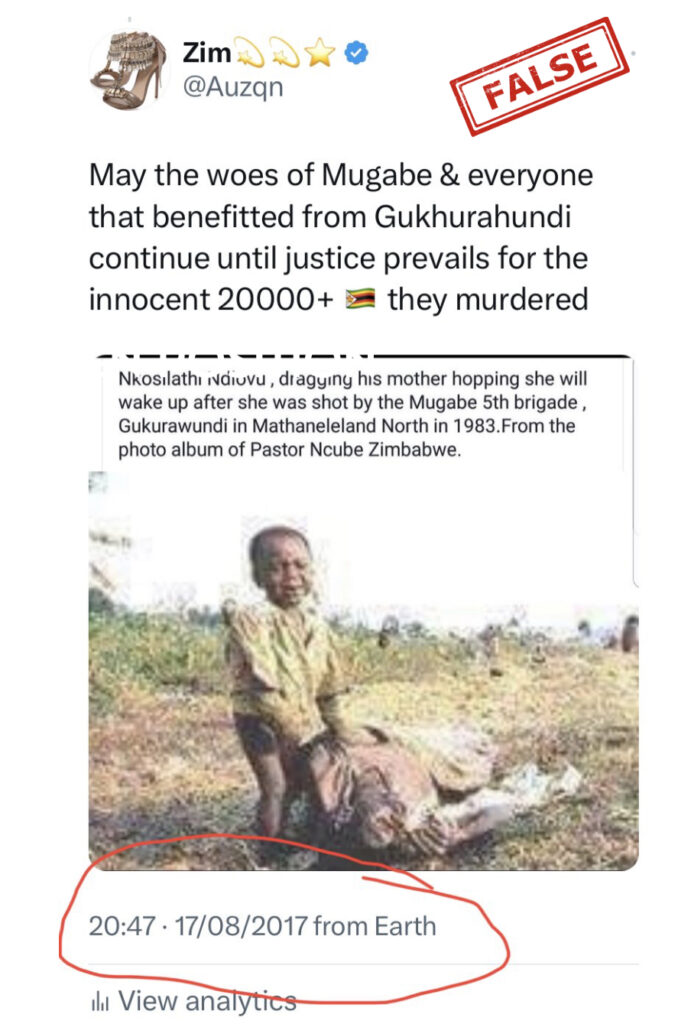
The user went on to share a screenshot of their 2017 post which had been captioned, ‘May the woes of Mugabe and everyone that benefitted from Gukhurahundi (sic) continue until justice prevails for the innocent 20000+ 🇿🇼 they murdered’.
Although the picture is a bit blurry, it is the same picture used in the Congo post. The caption embedded into the picture reads, ‘Nkosilathi Ndlovu, dragging his mother hopping (sic) she will wake up after she was shot by the Mugabe 5th Brigade, Gukurawundi (sic) in Mathaneleland (sic) North in 1983. From the photo album of Pastor Ncube Zimbabwe’.
While the user was correct that the picture is not from the current Congo conflict, neither is it from Zimbabwe, as he tweeted in 2017 and now.
Verification
A google reverse image search of the picture returns zero results. However, on TinEye, it returns 269 results.
An Observers France 24 story from 19 May 2016 uses this picture to illustrate how images from other African countries were being used for the Beni massacres in the Democratic Republic of Congo, such as on this post here.
The article says of the picture, ‘Other photos from Rwanda, such as that of a crying child dragging a lifeless body, are also used around the hashtag #JesuisBéni’.
Another TinEye result is from a 2017 Media Congo article on ‘The Top most common misinformation on social networks in the DRC and Africa’.
The article captions this same picture, ‘Photos of the Rwandan genocide, like that of this crying child dragging a lifeless body, were used to denounce the massacres in Beni around the hashtag #JesuisBéni.’
TinEye however, does not show the origin of the picture although both articles point to the Rwanda Genocide.
A closer look at the photo shows that the person lying on the ground is a man and not a woman, which suggests that this could not possibly be ‘Nkosilathi Ndlovu’s mother’.
Armed with this knowledge and mentions of Rwanda, a google search ‘boy dragging lifeless body rwanda image’ is done.
The first image is the correct one and provides the photographer as Peter Turnley.
Peter Turnley took the picture on 1 January 1994. It is captioned, ‘A Rwandan boy cries over the dead body of his father, who has just died from cholera in a refugee camp in Zaire’.
Apart from this picture, there is another from a different angle, clearly showing the man.
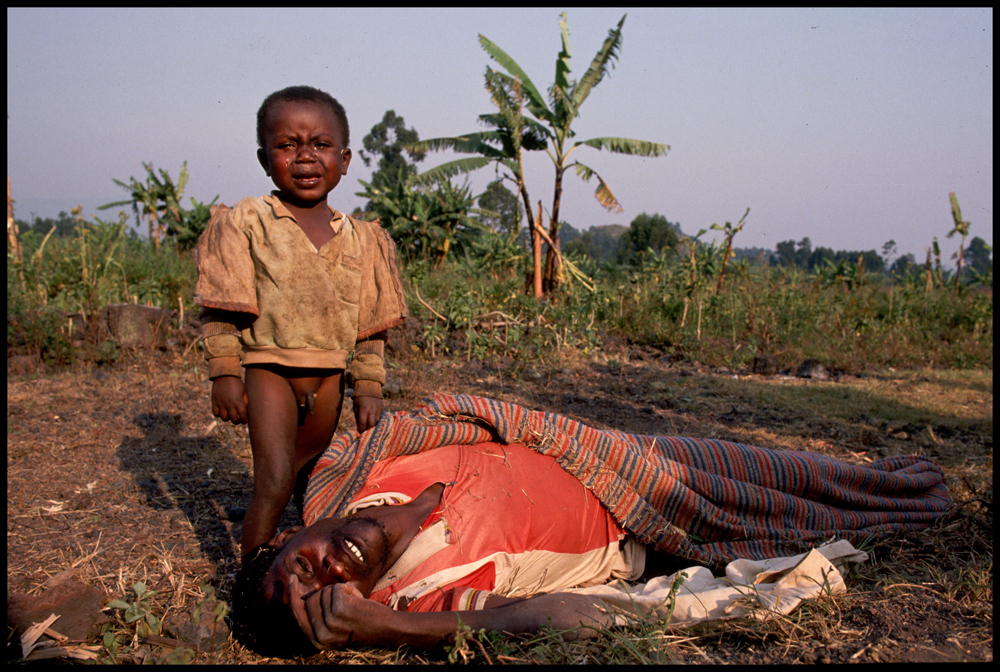
Using pictures out of context is a form of misinformation. This form of misinformation can be particularly dangerous because images are a powerful tool for swaying popular opinion and promoting false beliefs.
Conclusion
The claim that a picture of a young boy dragging a lifeless body is of Nkosilathi Ndlovu and his mother who was shot in 1983 during Gukurahundi in Zimbabwe is false. While there could be a Nkosilathi Ndlovu whose mother was indeed shot, this is not their picture. The picture is not from the current Congo conflict or the Beni massacres either.
The picture is of a Rwanda boy holding the body of his father who died of cholera at a refugee camp in the then Zaire.

